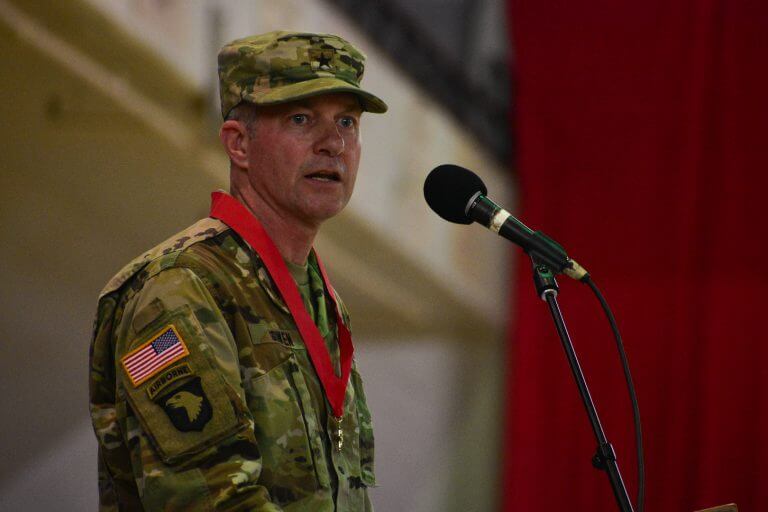With General Orders 2018-10, then-Secretary of the Army, Dr. Mark Esper, created the Army Futures Command — a command designated with the overall responsibility to lead the Army’s future force modernization enterprise. Under that order, Esper charged AFC to gauge emerging threats, assess new technologies, and develop the future operational environment to deliver concepts, requirements, and force designs that will drive modernization solutions. Driven by the Army’s failure to anticipate threats by potential peer-state adversaries and by the alarming rate of overmatch erosion due in part to the sloth-like speed of the existing modernization enterprise, the secretary made the bold decision to bet the future on a renovated modernization process and on the most significant structural change to the Army organization since 1973.
As the first AFC commander, Gen. John “Mike” Murray has set out to create a New Culture of Innovation. Under an integrated and iterative framework for discovery, invention, and innovation, Murray is creating a culture that unifies talent, capabilities, and infrastructure across the future force modernization enterprise that will strategically and effectively develop and deliver the Army of the next generation.
In the existing model, the talents, capabilities, and infrastructure involved in the modernization processes are resident within traditional defense contractors and within the Army’s established requirements, acquisition, science and technology, test and evaluation, and logistics organizations. Under the new AFC concept, Murray plans to expand this team to include small businesses, startups, public/private partnerships, and universities in order to deliver solutions at the speed of relevance. Perhaps there exists yet another pool of talent that can significantly improve our modernization enterprise and enable AFC’s success hidden in plain sight.
Traditional reserve component Soldiers who work as civilians in technology development businesses have the right combination of high-tech skills and operational experience to become a force multiplier for the AFC-led modernization enterprise. Traditional reservists are members of the National Guard or Army Reserve who maintain full-time careers in the private sector and part-time careers as Soldiers. Many of these reservists have civilian careers that are in some ways associated with their military careers, such that their operational experience enhances their effectiveness in their civilian careers and vice versa. We know, for example, that being an Army aviator and an airline pilot are mutually beneficial. Similarly, a cyber warrior who is also a civilian software engineer or a sheriff’s deputy who may also be a Soldier in the military police are able to apply the benefits of overlapping training and education to both of their roles as a civilian and as a Soldier.
But there are also careers in the civilian sector that Soldiers maintain that may be of special value to AFC’s vision of the modernization enterprise. For example, a Soldier in her civilian job may design computer games, be a venture capitalist, be an aerospace engineer, work in a materials laboratory, or create modern transportation and distribution systems. Soldiers with these types of skills, who have for years been developing technology in their civilian careers and simultaneously gaining operational experience in their reserve component career, could add unique expertise and provide a decisive advantage to the Army Futures Command.
Reserve component Soldiers with careers that are complimentary to the modernization process should be identified and invited to augment the active component modernization workforce. If we were to canvas our reserve component formations, we would be sure to find that there are Soldiers with 15-to-20 or more years of experience in some of the types of jobs that would give us the knowledge base that we lack in our own acquisition formations. With 15 years or more years of experience as scientists, engineers, programmers, strategists, analysts, financiers, or other relevant high-tech and developmental competencies, reservists could not only bring the skills that are in high-demand to Army’s modernization enterprise, but they bring their combined operational experience as well. These Soldiers could perfectly augment the active component, bringing up-to-date best practices and working knowledge of their field of expertise to the Army’s modernization enterprise.
In addition, augmenting the future force modernization enterprise with reserve component Soldiers brings the National Guard and Reserve perspectives to the development of operating concepts and material solutions. Nobody understands the National Guard domestic operation mission requirements as well as a National Guard Soldier who has personally participated in dozens of domestic operation events. When augmented with National Guard Soldiers, AFC and the acquisition workforce would ensure that domestic operations are properly accounted for in the development of mission critical systems.
The same is true when it comes to the inherent time limitations of the reserve components. Only a reservist fully understands the impact of their time available to train or maintain. With reserve component Soldiers on the modernization team, there is a better chance of properly identifying requirements that account for the reduced amount of time available for training, maintenance, and overall readiness that reserve components experience. These factors are important when designing new, complex systems that require extensive amounts of time to maintain or train upon in order to gain necessary proficiency.
In order to utilize reservists in the modernization enterprise, we must first improve the way in which we reach out, identify, and utilize these Soldiers. Within the reserves, we need to improve our talent management systems such that we can identify the Soldiers with the proper civilian skills, reach out to them to invite them to join the modernization team, and have the positions and resources in place to utilize them.
There’s a lot at stake in this process to build this new culture of innovation. We have overlooked this special capability of the National Guard and Reserve for too long. It is time for us to utilize the Total Army in the future force modernization enterprise.

